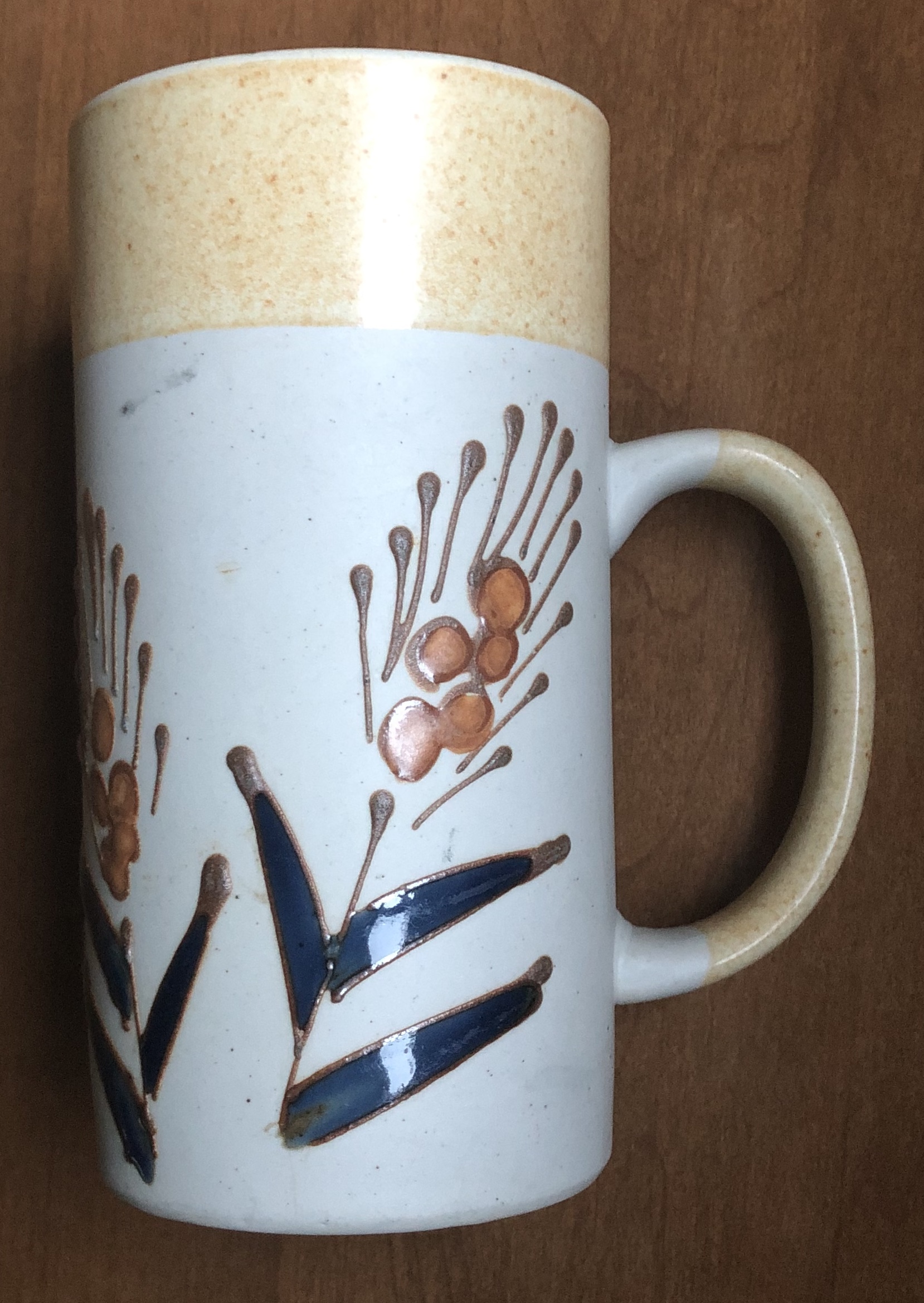Cuerda seca is a flexible technique at any temperature
The mug is has an unglazed (bare porcelain) outside surface. The cuerda seca lines containing the glaze have a formulation to flux and melt more than what is typical in the classic technique on tiles. And this appears to be insight-live.com/glossary/125">reduction-fired porcelain at high temperatures (because of the iron specks and grey body color and the metallic appearance of the lines), in contrast to the normal low fire terra cotta temperatures of typical cuerda seca. The formulation for the lines is likely very high in iron oxide (with some kaolin added for suspension, dry hardness, adhesion and paintability). The fill glazes are a transparent with added stain.
Pages that reference this post in the Digitalfire Reference Library:

This post is one of thousands found in the Digitalfire Reference Database. Most are part of a timeline maintained by Tony Hansen. You can search that timeline on the home page of digitalfire.com.
